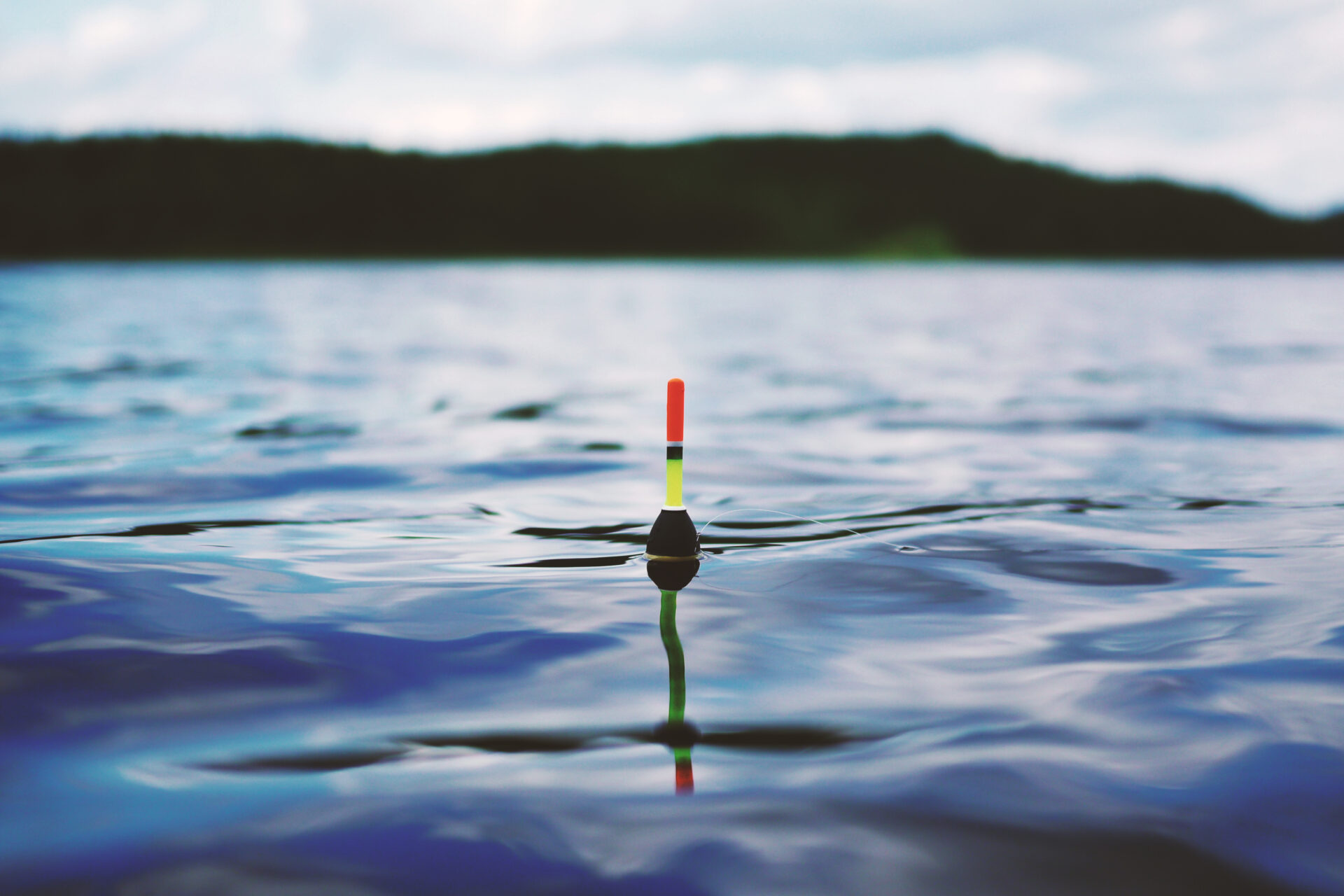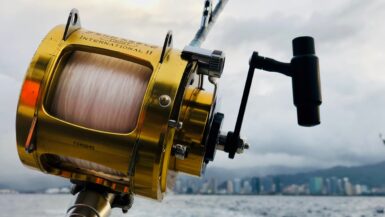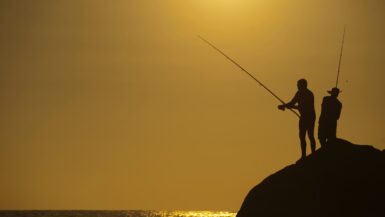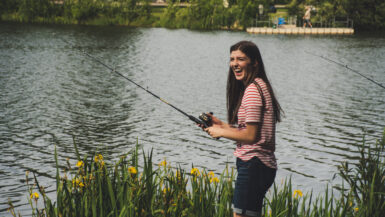Fishing is a great pastime, and to ensure a successful outing, knowledge and skill are key! If you’re a fan of the blue catfish and are looking to catch the big ones found in reservoirs, then you’re in luck. Here, you’ll learn about some of the best techniques for fishing for blue catfish in reservoirs. With the right tips and tricks, you’ll be on your way to a successful fishing excursion.
Preparation for Fishing for Blue Catfish
Whether you’re fishing for blue catfish in reservoirs or other bodies of water, the equipment and bait you use can make all the difference in your success. When it comes to blue catfish, you’ll need a rod and reel that are up for the challenge of catching a large fish, as well as a selection of lures and live bait. Popular live bait options include shad, worms, crayfish, and cut bait. For lures, blue catfish respond well to jigs, crankbaits, and spinnerbaits. You’ll also need a variety of terminal tackle, such as a sinker, hooks, weights, and line.
Find the Right Spot and Time
A successful fishing trip for blue catfish in a reservoir starts with finding the right spot and time. Blue catfish can be caught year-round, but their feeding habits change with the season. During the spring, they’re drawn to shallow, warm water near cover, while in the summer they move to deeper cooler waters. In reservoirs, blue catfish are also often found near submerged brush and reefs, as well as near the reservoir’s outlet. If you’re not sure where a reservoir’s sweet spots are, consult with a local angler for tips.
Set Up for Success
Once you’ve identified your spot, it’s time to get set up for success. Anchor the boat near the shallow side of the offshore ledge, and cast close to the edge. If you’re in a particularly deep part of the reservoir, you can also use a bottom-bouncer to get your bait down to the fish’s level. Make sure you keep your bait in the water for at least 15 minutes, as blue catfish are relatively slow eaters.
Techniques to Try
When fishing for blue catfish in reservoirs, the key is to use the right lure and presentation. While natural baits like cut bait and worms are always a great option, artificial lures can be effective, too. A jig-and-minnow combination, or crankbait, is effective for catching blue catfish in reservoirs. You can also try a “drifting and retrieving” technique, where you cast a lure and allow it to drift with the current while retrieving it at the same time. This is a great approach for covering a large area quickly, and is especially effective when the water is clear and the fish are scattered.
Be Prepared for the Big Catch
Finally, be prepared for the big catch. Blue catfish can grow to be quite large, so you’ll need a net that’s up for the job. Make sure you practice catch-and-release when fishing for blue catfish in reservoirs, as this is the best way to help ensure the species’ sustainability. With the right preparation and techniques, you’ll have the best luck fishing for blue catfish in reservoirs.
Location of Blue Catfish in Reservoirs
Fishing for Blue Catfish in reservoirs requires knowledge of where to find the fish, as reservoir fishing conditions can vary significantly. Generally, Blue Catfish are found in deeper waters and larger rivers, typically in depths between 8 and 25 feet. They can also be found in shallow waters near structure like logs, rocks, and vegetation. Blue Catfish tend to stay close to the bottom and are more active at night.
When to Catch Blue Catfish in Reservoirs
The best time to catch Blue Catfish in reservoirs depends on the season. In the spring, Blue Catfish can be found in the shallows spawning and will readily bite during the spawn. During the summer, Blue Catfish can be found in the deep waters of the reservoir in larger schools, but can be scattered throughout the entire reservoir. Heavier lines and heavy duty tackle are recommended for catching Blue Catfish during the summer. In the fall, Blue Catfish will move back into the shallows in preparation for the colder months and can be caught in areas where they congregate around logs, rocks and other structure.
What Bait and Techniques to Use
When fishing for Blue Catfish in reservoirs, using the right bait and techniques can make all the difference. Live bait tends to be the best choice when fishing for Blue Catfish in reservoirs, as they will readily feed on live bait. Cut shad, menhaden, anchovies, and herring are all excellent choices for catching Blue Catfish. For artificial lures, slow-sinking jigs and crankbaits are great choices. When using lures, it is important to remember to use slow, steady retrieves and to vary the speed and depth to find the Blue Catfish.
Final Thoughts on Fishing for Blue Catfish in Reservoirs
Fishing for Blue Catfish in reservoirs can be rewarding and enjoyable. It is important to stay informed about where these fish can be found, the best time and technique to use, and the best bait. Doing so will increase the chances of landing that trophy Blue Catfish.
Types of Bait for Blue Catfish
Live bait is one of the most effective techniques when fishing for blue catfish in reservoirs. Live bait such as worms, minnows, shad and suckers can be used. If you have access to live bait, you can use it to increase your chances of catching more catfish in your reservoir. Live bait is usually found on the surface of the reservoir and can be purchased from bait shops in the local area.
Frozen Bait for Blue Catfish
Frozen bait is another excellent option when fishing for blue catfish in reservoirs. Most frozen baits are made up of shad, herring, and other oily fish. The flesh of these fish is especially attractive to catfish, so adding this type of bait to your tackle box is a great idea. It also has the added advantage of lasting longer than live bait, making it more cost-effective.
Dough and Natural Baits for Blue Catfish
Another popular option for catching blue catfish in reservoirs is the use of dough and natural baits. Dough baits are typically made from a combination of flour and other ingredients, such as garlic and spices. The smell of these ingredients attracts catfish, which makes it an excellent choice. Natural baits such as chicken livers and crawfish can also be effective when targeting blue catfish.
Preparing Bait for Blue Catfish
Once you have the right bait, it’s important to prepare it properly. For live bait, make sure to hook it securely and avoid using too much, as this can scare away the catfish. If you are using frozen bait, thaw it out and make sure to keep it cold before using. With dough and natural baits, mix them with water and shape them into balls or strips. This will help attract the catfish and make it easier for them to grab and hold onto the bait.
Conclusion
Fishing for blue catfish in reservoirs requires the right bait to be successful. Live, frozen, and dough baits are all excellent choices, and by preparing them properly, you’ll increase your chances of a successful outing. With the right bait and technique, you’ll be on your way to catching plenty of blue catfish in no time.
Fishing Techniques for Blue Catfish
The first step in learning the best techniques for fishing for Blue Catfish in reservoirs is to become familiar with the local regulations. Different state and county governments have different regulations for fishing in reservoirs, and some require permits or licenses for fishing certain species. Check your local regulations to ensure that you’re following the proper laws and to prevent any potential violations.
Location is Key
Finding the right spot is key to successful Blue Catfish fishing in reservoirs. Blue Catfish prefer deep water and can go as deep as 70 to 80 feet, so focus your search for the deeper parts of the reservoir. If you can find a spot with a steep drop-off, that’s a great sign, as Blue Catfish like to stay around ledges and structure. In addition, look for areas with strong currents, since Blue Catfish like to congregate in areas where they can feed on baitfish.
Bait Selection
Choosing the right bait is an important component of successful Blue Catfish fishing. Live bait is generally the most effective, but cut bait and prepared bait can also be used. Good options for bait include shad, perch, crawfish, clams, and worms. In addition, be sure to use the proper hook and sinker size for the Blue Catfish you are targeting.
Time of Day and Season
Blue Catfish tend to feed most actively at night, so consider planning fishing trips for late evening or early morning. In addition, spring is often the best season for fishing for Blue Catfish in reservoirs, when the water temperatures are warming and the fish are more active.
Adjust Your Technique
When fishing for Blue Catfish in reservoirs, it’s important to adjust your technique. Start by using a slow retrieval rate and then experiment with various techniques. You can try jigging, trolling, drift fishing, and bottom fishing. By using different techniques, you’ll be able to optimize your chances of success.
Utilize Electronic Devices
Technology has become an important part of fishing, and electronics such as fish finders can be a great help when fishing for Blue Catfish in reservoirs. Fish finders can help you locate the best spots for targeting Blue Catfish, as well as monitor their behavior and depth. Fishing with a fish finder can greatly increase your chances of catching Blue Catfish in reservoirs.
Be Patient
Fishing for Blue Catfish in reservoirs can be challenging, and it often requires patience and experimentation. Don’t get discouraged if you don’t get results right away. Keep trying different techniques and spots and eventually you’ll find success.
Preparing Your Catch
To successfully fish for blue catfish in reservoirs, it is essential to be well-equipped with the right gear. The best tools for the job include a high-quality rod and reel, a tackle box filled with lures or bait, a net, and several buckets to store your catch. Opt for a medium-heavy or heavy rod and reel, depending on the size of the Blue Catfish in your chosen reservoir. A tackle box with plenty of lures or live bait can also help you to land bigger catfish. And, last but not least, make sure to have a net and several buckets on hand to store your catch safely.
Finding the Right Location
Once you have the right gear, it is time to start searching for the perfect spot in the reservoir to fish. Look for areas with deep water and plenty of cover, like logs, rocks, or vegetation. Blue catfish usually stay in deep water and tend to hide in the shadow of cover, so keep an eye out for these spots. It is also a good idea to look for areas that are close to the shore, as these are the spots where the catfish are most likely to feed.
Selecting the Best Live Bait
Live bait is an excellent option for catching blue catfish in reservoirs. Catfish are attracted to live bait due to their strong sense of smell, so make sure to use something that cats can’t resist. Popular options include worms, minnows, crayfish, shrimp, and cut bait. You can also use a combination of different types of bait for a more effective approach.
Setting Up the Right Rig
Once you have chosen the right bait, the next step is setting up the right rig. The most common rig for blue catfish is an S-Rig, which consists of a main line with a barrel swivel, a leader line with a hook, and an egg sinker. This rig ensures that the bait remains at the bottom of the reservoir, and it also keeps the bait suspended in the water column. You can also experiment with different rigs and setups to increase your chances of success.
Storing Your Catch
After you have caught your catfish, make sure to store them in a cool and dry place before releasing them back into the reservoir. Place the catfish in a bucket with water and keep it in a shaded area away from direct sunlight. If you need to keep them for a longer period of time, use an aerator to make sure that the catfish remain healthy and lively.
Concluding Thoughts
Fishing for blue catfish in reservoirs can be an exciting and rewarding experience for the avid angler. By following the tips and techniques outlined in this article, any angler can increase their chances of catching a lunker blue catfish from a reservoir. These include researching the area, using the correct bait and lures, as well as choosing a good spot to fish. With a little preparation and luck, you will be able to bring in a big blue catfish. Good luck and tight lines!





Leave a reply